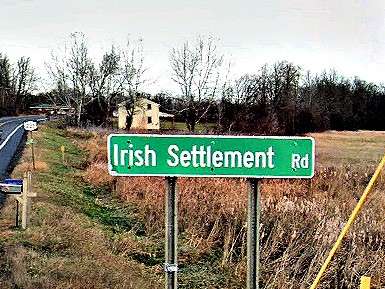 Thank you, Anne Gilliland, for asking the question – What’s in a name? On October 31, 1931, Anne was asked to read a paper to the Major Benjamin Mooers Chapter of the Daughters of 1812 in Plattsburgh, NY. Her paper? “What’s in a name? – a lot of history, that’s what!.”
Thank you, Anne Gilliland, for asking the question – What’s in a name? On October 31, 1931, Anne was asked to read a paper to the Major Benjamin Mooers Chapter of the Daughters of 1812 in Plattsburgh, NY. Her paper? “What’s in a name? – a lot of history, that’s what!.”
Most of her information came from Three Centuries in the Champlain Valley written in 1909 by Jeanette Tuttle, which is a treasured source of history.
Just about every main street in Clinton County, and usually the name of the town itself, reminds us of those who once lived among us, and with a little digging we can find and appreciate their legacies.
Dr. David S. Kellogg had the same inspiration and excerpts from his notebooks written between 1886 and 1909 were shared with us in The Bulletin of the North Country Historical Research Center (now in SUNY Plattsburgh Special Collections) in 1974.
So – did you know? Union Road in Peru was the home of the first European settlement in that area called “The Union.” Parts of Peru itself were originally known as Hackstaff Mills for John Hackstaff and Cochran’s Mills for John Cochran.
And looking around there is Lyon Mountain for Nathaniel Lyon, Rouses Point for Jacques Rouse and Chazy for Lieutenant Sieur De Chasy killed at the mouth of what is now the Little Chazy River; the Town of Clinton is named after the first Governor of New York State; Coopersville after Ebenezer Cooper; and Beekmantown for William Beekman, the patentee.
The Town of Saranac is full of surprises. Originally, and perhaps unoriginal, it was called Township Number 4. Today’s Picketts Corners was Hopper Corners after Bissell Hopper, a shoemaker who went bankrupt. The name change was for Edmund J. Pickett, a Civil War veteran and business man, active in politics and veteran affairs. Saranac’s previous names were Saranac Hollow and Devil’s Half Acre.
Back to the Chazy area, Saxe Landing was named after the Saxe family but could have been named Sullivan Landing after Timothy Sullivan who built the first store there. Ingraham was originally named Samson for Lester Samson, who owned a major hotel there in 1795, but the name was changed to Ingraham when a Captain Ingraham saved Hungarian refugee Martin Kostza from the Austrians in 1853 during the Kostza Affair.
This name change was noted by a couple of historians as a political move to show support for President Franklin Pierce. Pierce was not reelected but the name change to Ingraham stayed.
The history of Plattsburgh can be basically documented through its use of street signage. The early founders’ names are on the streets – Platt, Beekman, Sailly, Bailey, Miller, Rugar, Brinkerhoff and Addoms. Wives and children of early founders are noted on Catherine, Marion, Charlotte, Cornelia, Helen, William, and Margaret streets.
St. Charles Street, tucked away between North Catherine Street and Oak Street in Plattsburgh was named for Charles-Joseph-Eugène de Mazenod (1782 – 1861), Bishop of Marseilles and founder of the Oblate Order which first established itself in Plattsburgh at St. Peter’s Church and Charles-Auguste-Marie-Joseph, Count of Forbin-Janson, Bishop of Nancy and Toul (1785 – 1844), who visited Plattsburgh in 1840.
The streets of Plattsburgh’s French Quarter (Lorraine, Champlain, Montcalm and Lafayette), can be easily noticed off Cornelia Street. Each street has a storied source.
And rivers too – where one of Plattsburgh’s very first European settlers, Count Charles de Fredenburgh, is remembered at Fredenburgh Falls on the Saranac River. Salmon River reminds us of the long ago source of salmon which filled that river feeding settlers and soldiers. You will see a confirmation of the importance of this fish to the area by its presence on the Clinton County seal.
History continues to attract our attention exiting Plattsburgh west through Cadyville named for Herman and Cyrus Cady (1833) or Morrisonville named for Daniel Morrison, or north by Monty’s Bay for François Amable Monty (1736 – 1809), or south passing Bear Swamp Road where there was once a swamp, home to many bears.
Postmasters too often tacked their names onto locations, or vice versa, like the Disco, Lapham, and Wood families in the early hamlets in Black Brook, Peru and Mooers respectively.
The history of your town can more than likely be found on the street signs. And historic markers will help too. The message is to take a ride, Google the street names, read the markers, and enjoy learning the history of our towns.
Photo: Irish Settlement Road in Plattsburgh is an obvious reminder of the Irish immigrant community that once lived there.


